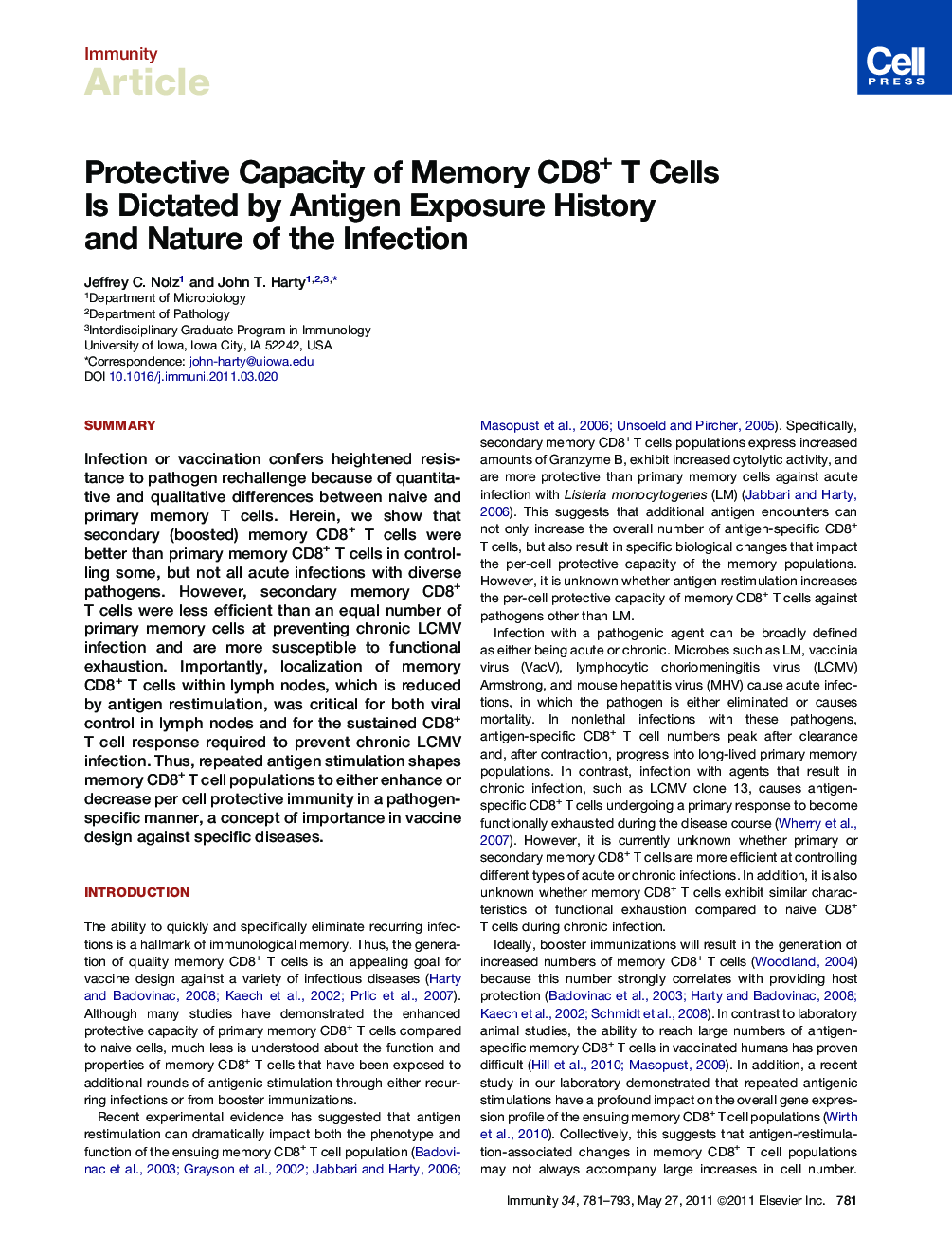| Article ID | Journal | Published Year | Pages | File Type |
|---|---|---|---|---|
| 3353400 | Immunity | 2011 | 13 Pages |
SummaryInfection or vaccination confers heightened resistance to pathogen rechallenge because of quantitative and qualitative differences between naive and primary memory T cells. Herein, we show that secondary (boosted) memory CD8+ T cells were better than primary memory CD8+ T cells in controlling some, but not all acute infections with diverse pathogens. However, secondary memory CD8+ T cells were less efficient than an equal number of primary memory cells at preventing chronic LCMV infection and are more susceptible to functional exhaustion. Importantly, localization of memory CD8+ T cells within lymph nodes, which is reduced by antigen restimulation, was critical for both viral control in lymph nodes and for the sustained CD8+ T cell response required to prevent chronic LCMV infection. Thus, repeated antigen stimulation shapes memory CD8+ T cell populations to either enhance or decrease per cell protective immunity in a pathogen-specific manner, a concept of importance in vaccine design against specific diseases.
► Secondary (boosted) memory CD8+ T cells protect better against some acute infections ► Secondary memory CD8+ T cells are more “exhaustible” than primary memory cells ► Primary memory CD8+ T cells are better at preventing chronic LCMV infection ► Lymph node entry is critical for memory CD8+ T cell protection against chronic LCMV
